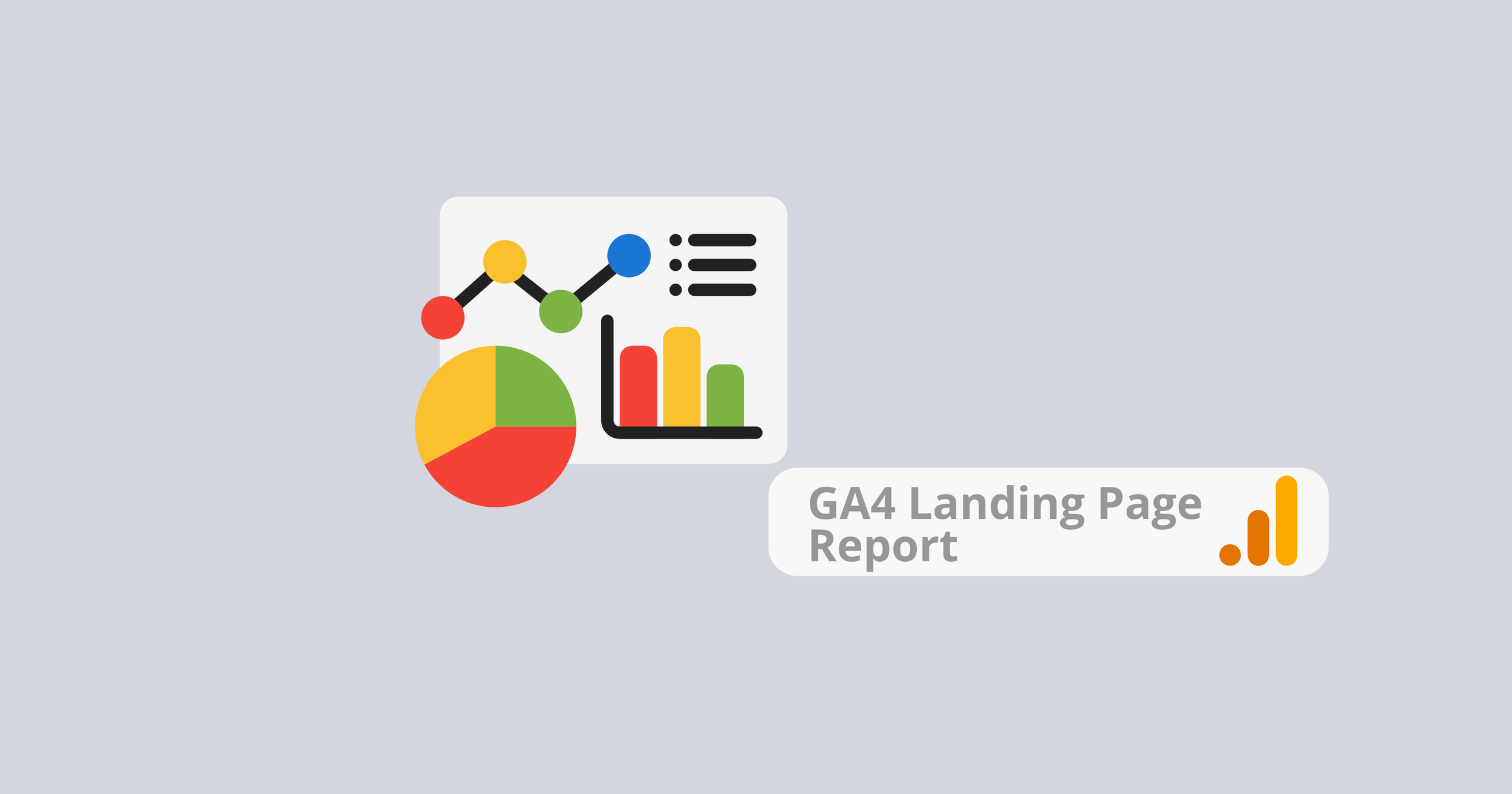Building a GA4 Landing Page Report: A Comprehensive Guide
Estimated Reading Time: 4.2 mins
Google Analytics 4 (GA4) is a powerful tool for tracking and analyzing your website's performance. One of its most valuable features is the ability to create detailed landing page reports, providing insights into the effectiveness of your landing pages in driving traffic and conversions.
Understanding Landing Page Reports
A landing page report in GA4 provides a comprehensive overview of your website's landing pages, including:
Traffic: The number of visitors each landing page receives.
Engagement: Metrics like bounce rate and time on page to gauge user interest.
Conversions: The number of conversions (e.g., purchases, sign-ups) generated by each landing page.
Traffic Sources: The channels through which visitors are arriving at your landing pages (e.g., organic search, social media, paid advertising).
Building Your GA4 Landing Page Report
Log in to GA4: Access your GA4 account.
Navigate to the Reports Section: Click on the "Reports" tab.
Select Acquisition: Under the "Acquisition" menu, choose "Landing Pages."
Customize the Report:
Dimensions: Add dimensions to analyze specific data points, such as "Country," "Device Category," or "Traffic Source."
Metrics: Select metrics like "Sessions," "Bounce Rate," "Users," and "Conversions" to evaluate performance.
Filters: Apply filters to focus on specific landing pages, traffic sources, or time periods.
Analyze the Data:
Identify Top-Performing Pages: Look for pages with high traffic and low bounce rates.
Evaluate Conversion Rates: Determine which landing pages are most effective in driving conversions.
Analyze Traffic Sources: Understand the sources of traffic to your landing pages.
Compare Performance: Compare the performance of different landing pages to identify areas for improvement.
Tips for Building Effective Landing Page Reports
Set Clear Goals: Define what you want to achieve with your landing pages (e.g., increase conversions, improve user experience).
Use Custom Dimensions and Metrics: Create custom dimensions and metrics to track specific data points relevant to your business goals.
Segment Your Data: Segment your data by different criteria (e.g., traffic source, device, user behavior) to gain deeper insights.
Compare to Benchmarks: Compare your landing page performance to industry benchmarks or historical data.
Take Action: Use the insights from your reports to make data-driven improvements to your landing pages.
Advanced Analysis Techniques
Cohort Analysis: Examine how different groups of users (e.g., new vs. returning) behave on your landing pages over time.
Path Analysis: Map out the typical user journeys to understand how visitors interact with your landing pages before converting.
Event Analysis: Track specific user interactions (e.g., clicks, form submissions) to identify areas for improvement.
Best Practices for Landing Page Optimization
Keep It Simple: Avoid overwhelming users with too much information on a single landing page.
Use Clear and Concise Copy: Write compelling copy that clearly communicates the value proposition of your product or service.
Optimize for Mobile: Ensure your landing pages are mobile-friendly to cater to the growing number of mobile users.
Test and Iterate: Continuously test different landing page variations to find the most effective design and messaging.
Integrate with Other Tools: Combine GA4 data with insights from other tools (e.g., heatmaps, A/B testing) for a more comprehensive understanding of user behavior.
Conclusion
By following these guidelines and leveraging the power of GA4, you can create highly effective landing page reports that drive conversions and improve your overall website performance.

